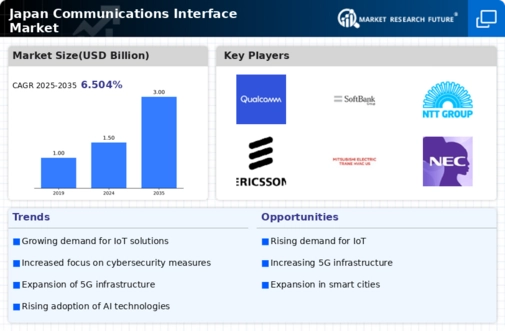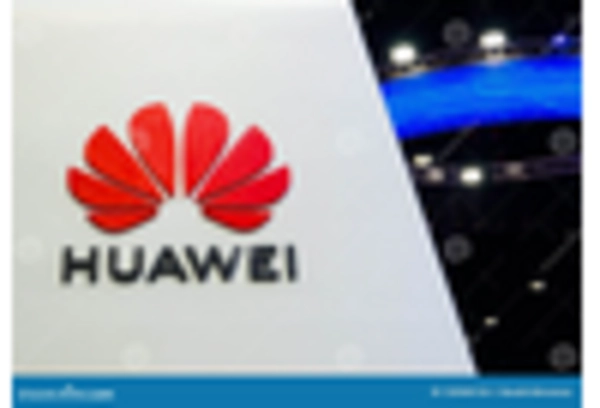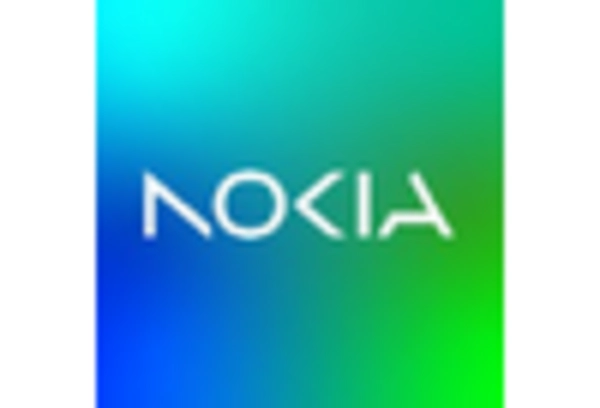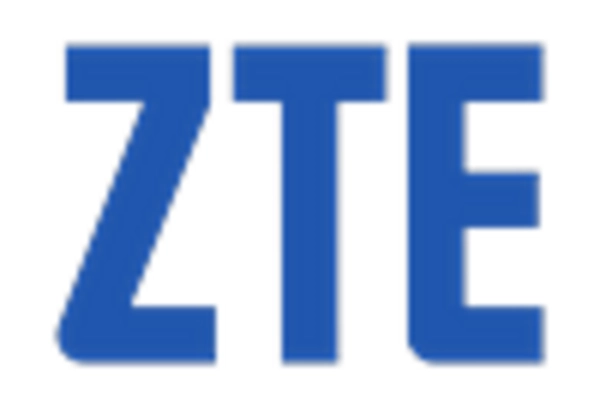Emergence of Smart Devices
The proliferation of smart devices is a key driver of the communications interface market in Japan. With the increasing adoption of smartphones, tablets, and wearables, there is a heightened demand for communication interfaces that can seamlessly connect these devices. In 2025, the smart device market in Japan is projected to reach $20 billion, indicating a robust growth potential. This trend compels the communications interface market to focus on developing versatile and adaptive interfaces that can accommodate various device types and operating systems. Additionally, the integration of artificial intelligence in smart devices necessitates advanced communication protocols that ensure efficient data exchange. As consumers seek enhanced connectivity and functionality, the communications interface market must evolve to meet these expectations.
Advancements in IoT Integration
The integration of Internet of Things (IoT) technologies is driving the communications interface market in Japan. As industries increasingly adopt IoT solutions, the demand for seamless communication interfaces rises. This trend is particularly evident in sectors such as manufacturing and smart cities, where interconnected devices require robust communication protocols. In 2025, the IoT market in Japan is projected to reach approximately $10 billion, indicating a substantial growth trajectory. The communications interface market must adapt to these advancements by developing interfaces that support diverse IoT applications, ensuring interoperability and scalability. Furthermore, the push for smart infrastructure necessitates innovative communication solutions that can handle the increased data traffic generated by IoT devices, thereby enhancing overall operational efficiency.
Focus on Enhanced User Experience
The emphasis on enhanced user experience is increasingly influencing the communications interface market in Japan. As competition intensifies, companies are prioritizing the development of user-centric communication interfaces that are intuitive and easy to navigate. In 2025, it is estimated that 70% of consumers will prefer interfaces that offer personalized experiences, driving innovation within the communications interface market. This focus on user experience encourages the adoption of design thinking principles, leading to the creation of interfaces that cater to diverse user needs. Furthermore, the integration of feedback mechanisms allows companies to continuously improve their products based on user input. As a result, the communications interface market is likely to witness a shift towards more engaging and interactive communication solutions.
Government Initiatives and Support
Government initiatives aimed at enhancing digital infrastructure are significantly impacting the communications interface market in Japan. The Japanese government has been actively promoting digital transformation across various sectors, which includes substantial investments in communication technologies. In 2025, government funding for digital infrastructure is expected to exceed $5 billion, reflecting a commitment to modernizing communication systems. This support fosters innovation within the communications interface market, encouraging the development of advanced communication solutions that meet the evolving needs of businesses and consumers. Additionally, regulatory frameworks are being established to facilitate the adoption of new technologies, further driving market growth. The collaboration between public and private sectors is likely to yield innovative communication interfaces that enhance connectivity and efficiency.
Increased Demand for Remote Communication Solutions
The growing need for remote communication solutions is reshaping the communications interface market in Japan. As businesses and individuals increasingly rely on digital communication tools, the demand for effective and user-friendly interfaces has surged. In 2025, the remote communication market is anticipated to grow by 15%, highlighting the shift towards virtual interactions. This trend compels the communications interface market to innovate and provide solutions that enhance user experience, such as intuitive interfaces and seamless integration with various platforms. Furthermore, the rise of remote work and online collaboration tools necessitates robust communication interfaces that can support high-quality audio and video transmission. As a result, companies are investing in developing advanced communication technologies that cater to this growing demand.

















Leave a Comment